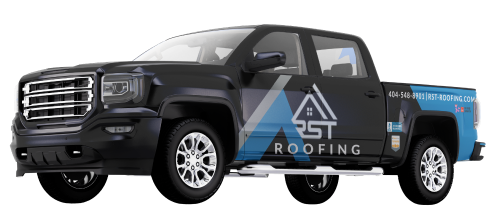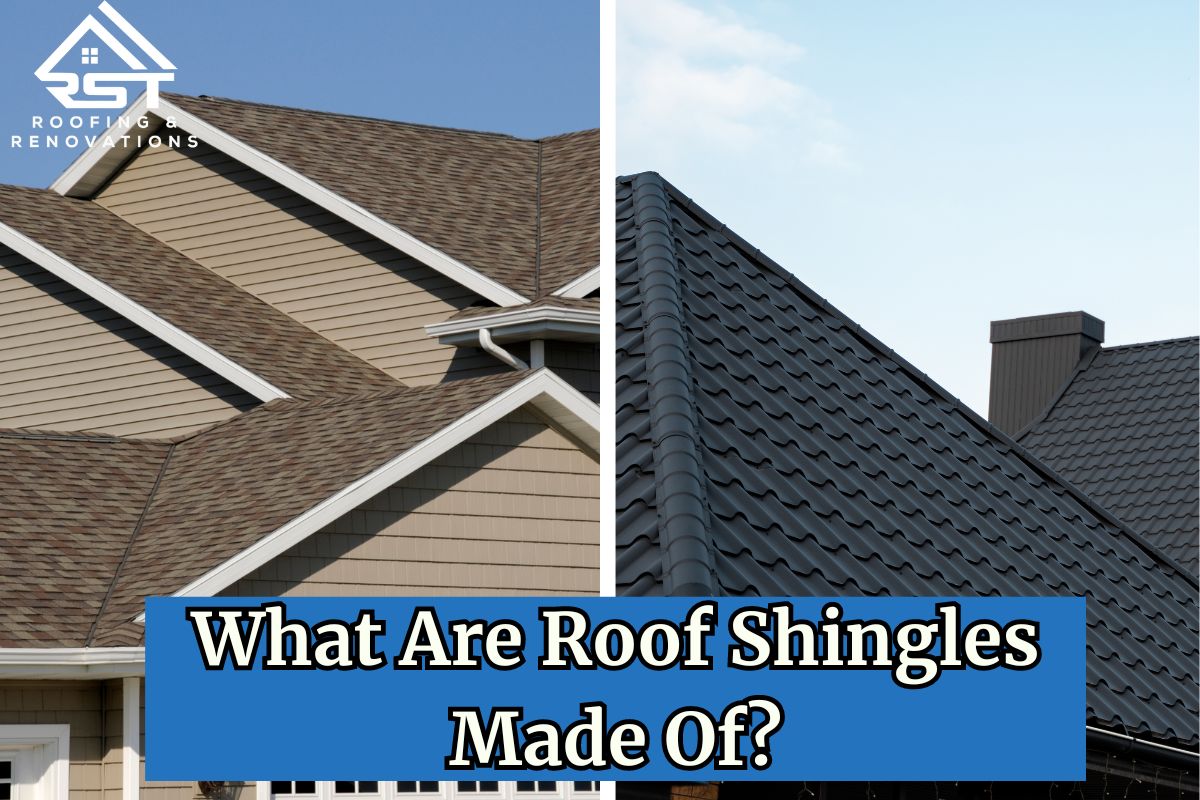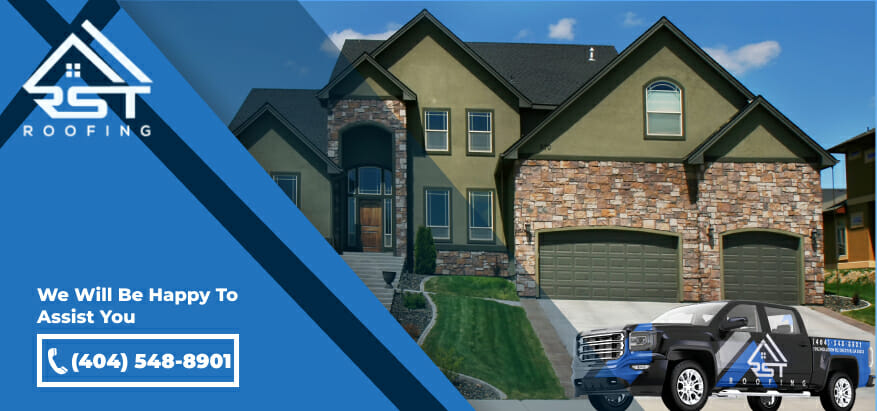When homeowners think of roofs, they typically imagine a roof using black asphalt shingles. However, there are numerous types of shingles on the market.
Roof shingles are made from different materials, such as asphalt, fiberglass, wood, and more. Each provides a roof with varying levels of durability and longevity, so in this blog post, we’ll explore the different materials and the benefits they can offer your home if you choose them as your roof shingle.
#1 Asphalt Shingles
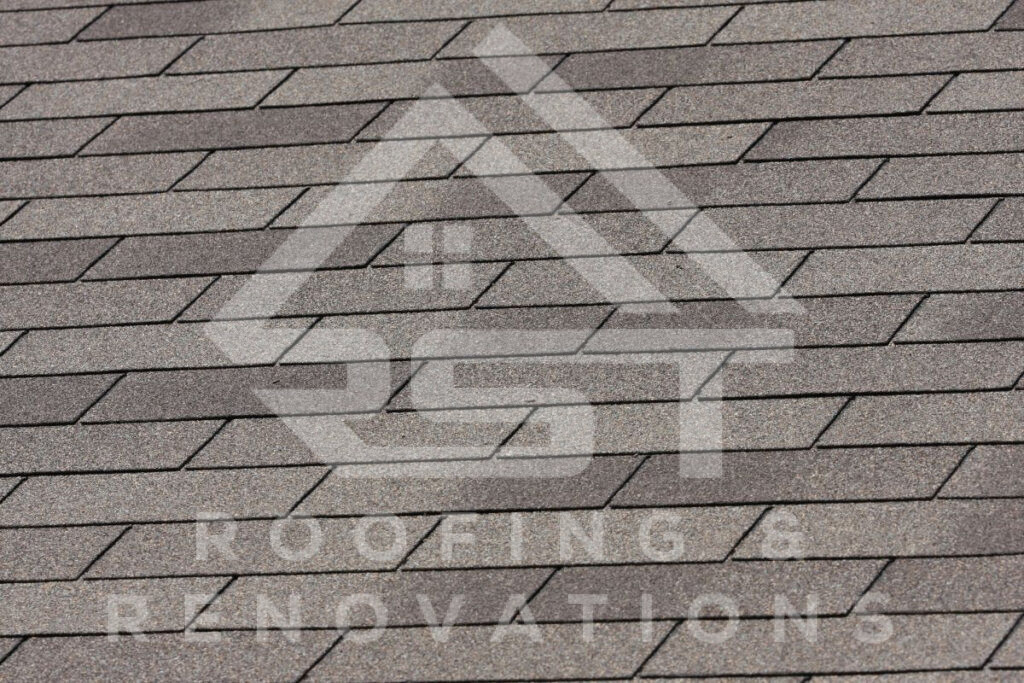
Asphalt shingles are among the popular shingle choice, and the one that typically comes to mind when picturing shingles. But what exactly are these shingles made out of?
- Reinforced Mat: The base of an asphalt shingle is made from a reinforced mat. This mat is usually constructed from fiberglass or organic materials like paper, wood, or cellulose, providing the shingle with strength and shape.
- Asphalt Coating: The mat is then covered with an asphalt coating made from petroleum asphalt, which is a thick, sticky substance. The mat gets fully coated on both sides with the asphalt, which is what makes the shingles waterproof.
- Surface Protection (Granules): Surface protection is added on top of the asphalt coating. This additional layer of protection consists of tiny granules made from minerals like crushed rock or ceramic. The granules are embedded into the exposed asphalt coating with the purpose of protecting the asphalt coating from the sun’s UV rays while providing color/texture to the shingles.
- Additional Components: Different types of asphalt shingles may also include additional components like polymers for improved durability and flexibility. But at their core, the combination of a reinforced mat, asphalt coatings, and mineral granules is what gives asphalt shingles their functionality.
#2 Wood Shingles and Shakes
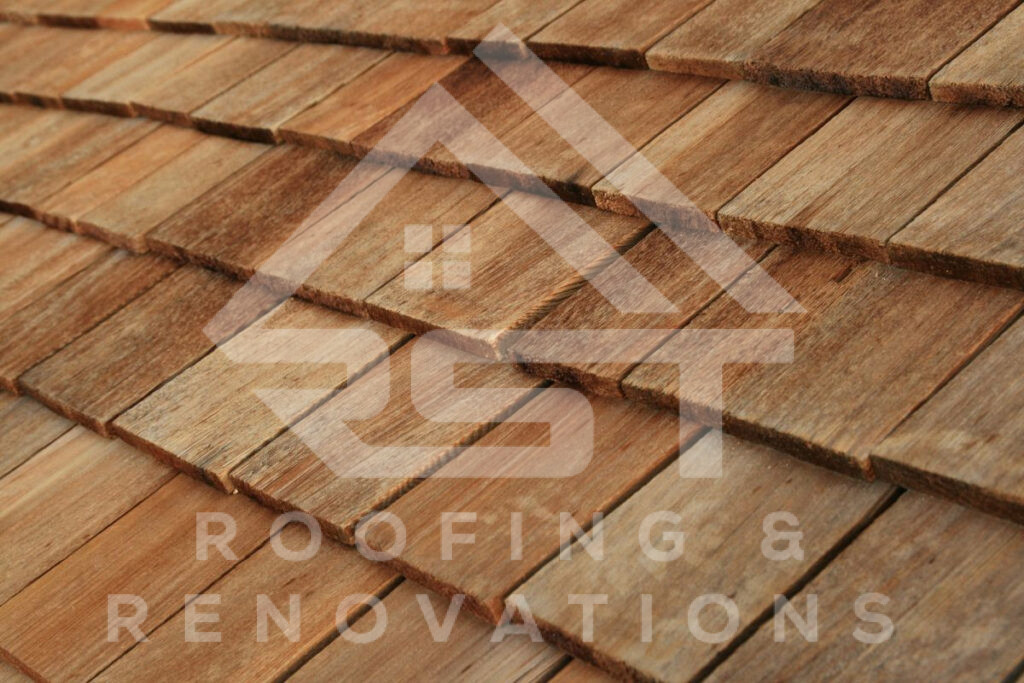
While not as widespread today, wood shingles and shakes are very common roofing materials. Even though they are made from natural materials, they require more maintenance than asphalt options.
- Wood shingles are machine-cut and have smooth, uniform surfaces and straight edges on both sides. On the other hand, wood shakes are hand-split and have rougher, irregular surfaces and edges.
- Both wood shingles and shakes start from logs, usually Western Red Cedar, Cypress, pine or Redwood trees. The logs get cut into thin tapered pieces, and some pieces are treated with preservatives or fire retardants during manufacturing.
- Wood shingles and shakes give the roof a rustic, natural look but require more frequent treatments and repairs than composite roofs. Over time, the wood can crack, warp, or be penetrated by moisture, insects, and other environmental stressors.
#3 Metal Shingles
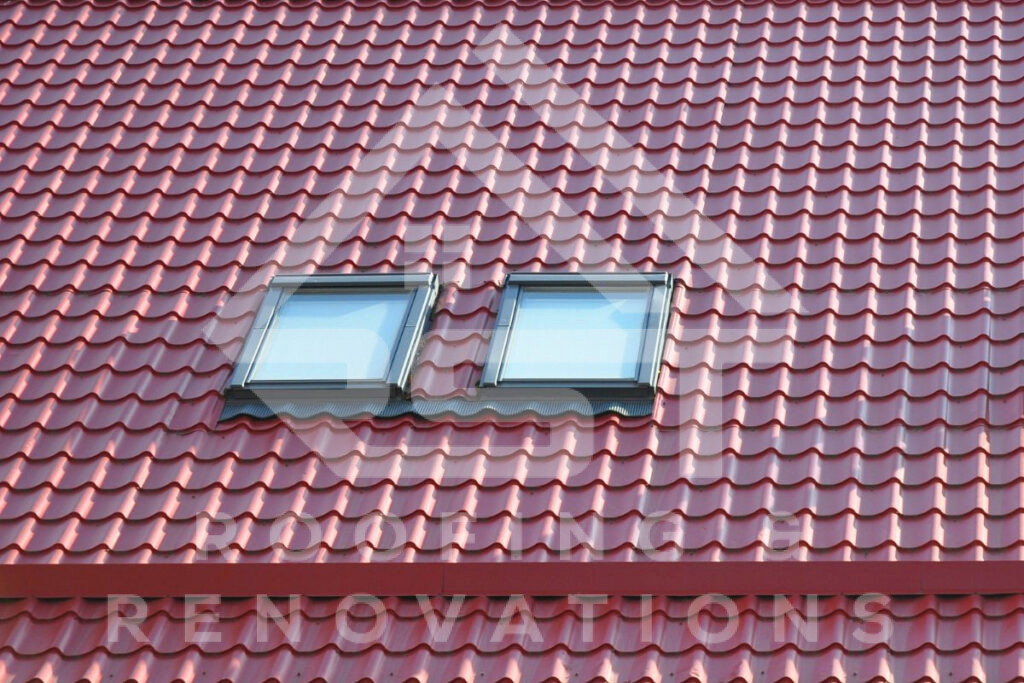
While not nearly as common on homes, metal shingles are a durable option. These roofs provide superior durability and weather resistance and come in many metal variations.
- Metal Variety: The main materials used for residential metal shingles are steel, aluminum, copper, and zinc alloy. Steel is one of the most economical choices but requires painting or protective coatings to prevent rust and corrosion. Aluminum doesn’t rust but is more expensive. Copper and zinc develop a protective coating as they age but are high-end options and more expensive.
- Protective Layers: Many metal roofing shingles are covered with a protective coating to resist damage from the elements like rain, hail, snow, and UV rays. Some metal roofs also have granular coatings to imitate traditional shingles better.
- Recycled Materials: Regarding environmental impact, metal roofs often incorporate recycled materials in their production. And at the end of their long lifespan, metal roofs themselves can also be recycled.
#4 Clay and Concrete Tiles
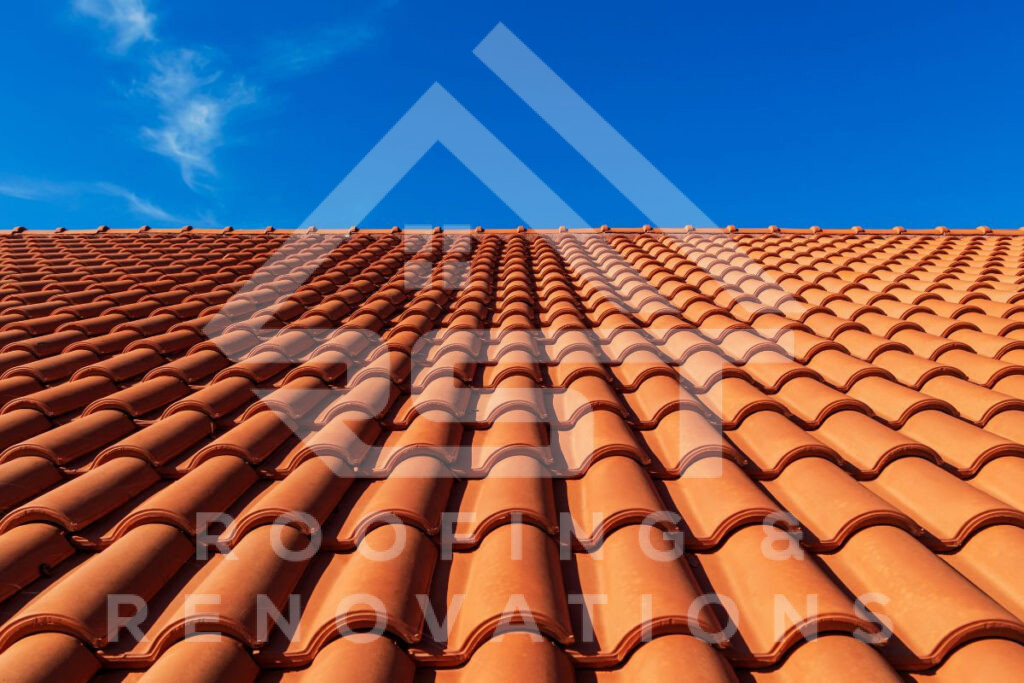
For a very classic, Southwest-inspired look, some roofs use clay or concrete tiles. These heavy, durable tiles have been used for centuries, originating from cultures in the Mediterranean region.
- Clay-Based Tiles: Natural clay tiles start from a specific clay-based soil that gets formed into arched tiles and kiln-fired. Different mineral glazes can provide color variations to the finished tiles.
- Concrete-Based Tiles: Concrete tiles are made by pouring a concrete mixture into molds and allowing it to cure over time. Minerals and coatings add texture and color options beyond the basic gray concrete look.
- Both clay and concrete roof tiles are extremely heavy, so the home’s underlying structure needs to be built to support all that weight.
#5 Synthetic Shingles
In recent decades, synthetic alternatives to traditional roofing materials have emerged. These manufactured shingles aim to capture the visuals of wood shakes, clay tiles, or slate roofs while providing better durability and lower costs.
- Many synthetic roofing products use a base of plastic, rubber, or polymer resins combined with UV stabilizers, recycled materials, and various coatings. These materials allow manufacturers to mimic the look of more expensive, higher-maintenance roofing options.
- For example, synthetic slate often contains a mix of rubber and plastic and has a protective coating to recreate the appearance and texture of real slate. Synthetic cedar shakes also use polyurethane and recycled materials to achieve a similar look to real wood at a lower cost.
- While not as durable as real slate or clay, higher-end synthetic tiles can last around 30 to 40 years with proper installation. The lower weight of these shingles compared to real material is also a benefit during installation.
#6 Solar Shingles
Solar shingles combine traditional shingle materials with integrated solar cells to generate electricity from the sun’s rays.
- Solar shingles, like those from GAF, use a base of durable thermoplastic polymers embedded with solar cells. The polymers protect the cells while allowing sunlight to penetrate.
- On the front, the solar cells convert sunlight into sustainable electrical energy that can power the home. On the back, standard asphalt protects and waterproofs like a normal roof shingle.
- While more expensive upfront, solar shingles can offset energy costs over their 25+ year lifespan. Their low profile and shingle styles also provide a clean, integrated look compared to bulkier rack-mounted solar panels.
- Not all types of roofs are ideal for solar shingles. Careful planning is required to ensure sufficient sunlight exposure and optimal positioning of the solar shingles.
Also Read: Solar Roof Shingles Vs. Panels: Choose the right solar roofing option
Call RST Roofing And Renovations For A Roof Replacement In Atlanta
With years of experience and many successful roof replacements and installations, we can confidently say that our team at RST Roofing and Renovations understands the importance of quality and faultless roof installations. We source the finest roofing materials, including top-of-the-line solar shingles, to ensure your new roof not only looks great but also provides optimal energy efficiency and durability.
At RST Roofing and Renovations, we care about doing great work and making our customers happy. It doesn’t matter if you need a whole new roof or just a small repair; you can count on our experts to get the job done right. Give us a call today at (404 ) 548-8901 to schedule a free consultation, and we’ll show you why we’re the best roofing company around.



